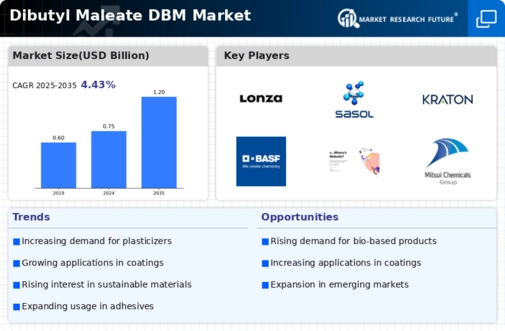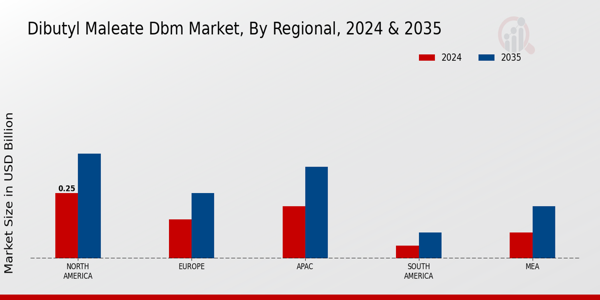Technological Innovations
Technological advancements play a crucial role in shaping the Dibutyl Maleate DBM Market. Innovations in production processes, such as improved synthesis methods, enhance the efficiency and yield of dibutyl maleate. These advancements not only reduce production costs but also improve product quality, making dibutyl maleate more appealing to manufacturers in various sectors. Furthermore, the integration of automation and digital technologies in manufacturing processes is expected to streamline operations, thereby increasing overall productivity. As a result, companies that leverage these technological innovations may experience significant growth in market share.
Sustainability Initiatives
The increasing emphasis on sustainability within the Dibutyl Maleate DBM Market is driving demand for eco-friendly alternatives. Manufacturers are increasingly adopting sustainable practices, which include the use of renewable resources and the reduction of harmful emissions. This shift is not only a response to regulatory pressures but also aligns with consumer preferences for greener products. As a result, companies that prioritize sustainability are likely to gain a competitive edge. The market for dibutyl maleate is projected to grow as industries seek to replace traditional plasticizers with more sustainable options, potentially increasing market share for environmentally friendly products.
Expanding Applications in Plastics
The expanding applications of dibutyl maleate in the plastics industry are a key driver for the Dibutyl Maleate DBM Market. As manufacturers seek to enhance the flexibility and durability of plastic products, dibutyl maleate serves as an effective plasticizer. The increasing use of plastics in various sectors, including packaging, automotive, and consumer goods, is likely to propel the demand for dibutyl maleate. Market trends suggest that the plastics segment will continue to grow, driven by innovations in product formulations and the need for high-performance materials.
Rising Demand in Coatings and Adhesives
The demand for dibutyl maleate in the coatings and adhesives sector is witnessing a notable increase, significantly impacting the Dibutyl Maleate DBM Market. This growth is attributed to the expanding construction and automotive industries, where high-performance coatings and adhesives are essential. The versatility of dibutyl maleate as a plasticizer enhances the performance characteristics of these products, making them more desirable for manufacturers. Market data indicates that the coatings segment is expected to account for a substantial share of the dibutyl maleate market, driven by the need for durable and efficient materials.
Regulatory Compliance and Safety Standards
Regulatory compliance and safety standards are increasingly influencing the Dibutyl Maleate DBM Market. Stricter regulations regarding chemical safety and environmental impact are prompting manufacturers to adopt safer alternatives. Dibutyl maleate, known for its lower toxicity compared to traditional plasticizers, is gaining traction as a compliant option. This shift is likely to enhance its appeal among manufacturers seeking to meet regulatory requirements while maintaining product performance. As safety standards evolve, the demand for dibutyl maleate is expected to rise, positioning it as a preferred choice in various applications.




















Leave a Comment